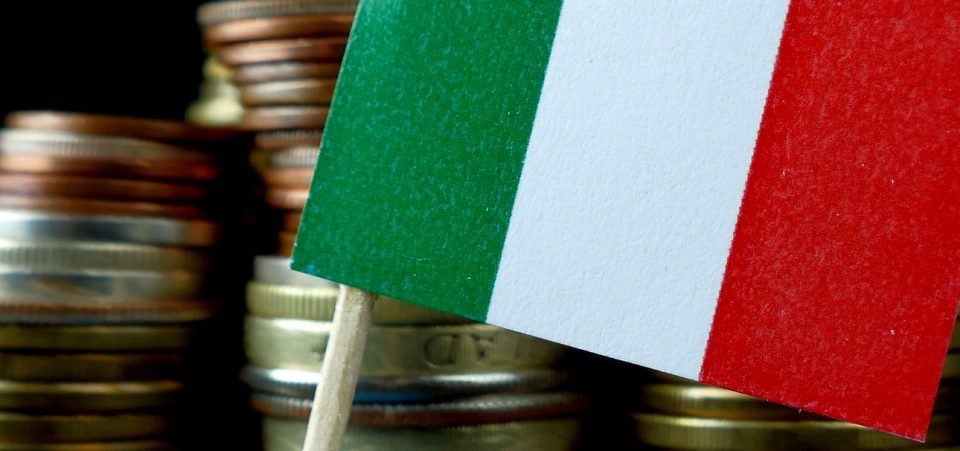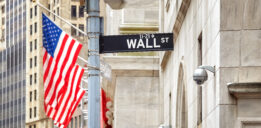Ignoring History Will Lead to Another Financial Crisis
Without understanding history, we cannot explain the present. This is certainly the case with economics. Since the 1950s, the tendency has been to advance this discipline as a science, removing the human element and using many assumptions and more mathematical formulas to process them than the “Apollo 11” program exploited to send Neil Armstrong to the moon. If we want to understand where the next financial crisis will come from, it is essential we learn from this misstep.
Economics is, after all, a study of human behavior. It should not be relegated to a series of mathematical models that physicists would envy. Mathematical models have encouraged the idea of constant growth and controlled risk management. In nature, neither one is possible.
The only thing that real economics has taught us is that there are no guarantees or certainties in economic theories. There are no scientific laws that can be extrapolated. Had the financial gurus who toyed with the idea of sub-prime mortgages considered finance in those terms, they would have understood the fallacy of their “product” before the financial crisis.
You Can’t Prevent a Financial Crisis
Financial crises are inevitable. But the right thinking could mitigate their effects, so long as we understand that there’s no such thing as self-regulation. Humans must remain in control. There’s still the weakness of the global banking financial system, even as we have faced the fallout of financial failure since 2007. The crisis on Wall Street produced a worldwide chain reaction, which has not yet settled.
Yet, the crisis is part of a timeless or cyclical course of events. They don’t repeat, but they alter and adjust the context in which they manifest themselves. At the core, though, they have the same overarching problem or cause.
Since the early 1990s, the financial markets have influenced the lives of ordinary people. They had nothing to do with Wall Street. We have witnessed a veritable quarter-century (or longer) of banking-financial colonization. But this is not new.
We look to the 1920s and 1930s for explanations about how the world could have permitted the unhinged speculation that produced the 2008 financial crisis. In the similarities, there is the hope of identifying solutions. The quest remains crucial because, while the financial markets have recovered from the crisis, average people have not.
The Historical Approach to Finance and the Medici of Florence…
The historical approach to understanding social and economic problems is the only way to get any answers. Economists, who believe they are as scientific as physicists with their formulas, have only perpetuated the problems. (Source: “How Did Economists Get It So Wrong?,” The New York Times Magazine, September 2, 2009.)
History might prove a better teacher. But why limit the reference to 1929? It turns out that mankind has not changed much over the blip in geological time that it has inhabited the Earth.
In that spirit, the Medici family of bankers that played a fundamental role in financing the Renaissance has much to teach the modern world. In 1948, a historian uncovered just how much the Medici’s experience had to explain about modern finance and the crises it produces. Raymond De Roover analyzed the Medici-Tornaquinci collection, part of Harvard University’s book collection. He also studied the records kept in the Florentine archives (Mediceo avanti il Principato).
De Roover, in his seminal book The Rise and Decline of the Medici Bank offers an analysis of how the greatest financial institution and system flourished and declined. Regardless of the fact that the events he describes occurred over five centuries ago, there are remarkable similarities to the 1929 stock market crash, and even more so to the 2008 financial crisis. The Medici Bank represents a crucial evolution in the concept of banking and finance.
Banking and Finance Are as Ancient as History Itself
The notion of a “deposits and loans” service, which banks still offer now, goes all the way back to ancient Mesopotamia. The Sumerians, circa 3500–2500 BC, were among the first people who left records of entrusting their property to third parties. Later Mesopotamian civilizations, such as the Babylonians, have left more detailed records. Individuals entrusted their valuables in temples. They felt safe because the priests and the gods would watch over the assets.
Coinage, bullion, and ownership transfers via receipts were also practiced in the land that is now Iraq. The term “bank” may originate from the Italian “banco,” meaning “bench.” It may go back to the benches that priests used in Greek temples for their financial tasks. Clearly, they borrowed from the Babylonians.
The Florentine Bankers of the Renaissance and the Birth of Capitalism
Fast forward to the Italian Renaissance, (1300–1550). That’s when the money lenders and custodians adopted a fundamental innovation.
The Florentine bankers also guaranteed payments. They became guarantors, using letters of credit, which were pledges of payment on behalf of those who presented them. The Medicis invented the “check,” the precursor of the credit card and all financial instruments thereafter, from treasury bills to options. These are all based on the idea of an exchange based on a guarantee or assurance.
Florence wasn’t just a city of art. It was the Wall Street of its time. It became one of the richest and most powerful cities in the world. In fact, first came the money, then came the artists like Michelangelo and Brunelleschi Leonardo, whose works were financed by Florence’s role as bank to the known world. Such was its importance that, by the early 13th century, Florentine bankers lent money to kings and the Pope in Rome. Florence was the precursor of the modern financial system.
Bankers realized that wars were a big source of income, and royal households throughout Europe used the services of Florence. There was a major crash of the banking system in 1345, caused by having taken on too much debt; what else is new?
Still, this opened the path for the Medici family to emerge. The founder, Giovanni di Bicci de’ Medici, used a friendship with the Pope to expand his services, establishing actual branches in various European capitals. He also expanded the idea of “investment,” including real estate and art. Medici invented the “multinational.”
Every branch had its own partner/director, who would be paid in shares.
But the Medicis discovered that finance has its cycles. They also discovered, as did their modern successors at The Bear Stearns Companies, Inc. or Lehman Brothers Holdings Inc., that greed and hubris are difficult to manage; they inevitably lead to a collapse. Indeed, the partners/branch managers took on excessive debt, also making bad loans (England still owes billions of pounds—£10,000 in 1467 money—which it never paid back to the Medici heirs).
The collapse of the Medici empire, then, reads just as the banking disasters of the 21st century. A lack of liquidity eventually caught up with an excess of ambition. Reduced to the base, that’s how one might describe the sub-prime crisis as well. The exception is that there was no central bank yet. The Medicis were as close to that concept as the time period had. Central banks, like the Federal Reserve, act as umbrellas in times of trouble.
The Medici Legacy
The Medicis left a global legacy. They were the true inventors of modern capitalism. They used their money to finance various activities from art to real estate and wars.
They invented what Karl Marx described as the “rentier class.” The Medicis turned from banking to politics in the 1500s, but their rise and fall offers a key to understanding modern financial crises.
Too often, we rely on economic or financial analyses that end up producing too many numbers and not enough sense. That’s because crises don’t occur in vacuums or isolation. They are the product of financial, as well as economic, historic, cultural, and other factors that intertwine. A multidisciplinary approach is necessary.
It’s also necessary to realize, before taking on big financial risks, that bankers—indeed, humans—don’t have all the answers. We can never be too certain. There are always unforeseen complexities. Looking to finance and economics alone for answers, therefore, won’t help.
A new approach to the study of markets is necessary. We must consider many disciplines and apply the humanities—yes, the very same that universities have renounced in recent years.
Modern technology, combined with humanistic thinking, could yield better results. Ultimately, it could produce a better kind of finance or economics.
Other People’s Money
One way to start a new approach is to reduce the impetus for risk-taking, especially risk-taking with other people’s money. Rather than ease banking regulations, the separation between loan banks and speculative banks should be made sacrosanct or instilled in the Constitution. They had been the law until 1999, when President Bill Clinton repealed the Glass-Steagall Act.
Is it a coincidence that the 2008 financial crash, which spawned an economic recession the likes of which had not occurred since the Great Depression, happened less than a decade after the Glass-Steagall Act was shelved? There are no definitive answers.
Two Nobel Prize economics laureates, Joseph Stiglitz and Paul Krugman, have both criticized the 1999 Gramm–Leach–Bliley Act (GLBA) (aka the Financial Services Modernization Act of 1999). The 1999 reform allowed commercial banks to take bigger risks again, just like the investment banks. It also led to a series of mergers and acquisitions in the financial sector. In 2000, for example, J.P. Morgan & Co and Chase Manhattan Bank merged to form what we now call JPMorgan Chase & Co. (NYSE:JPM).
The collapse—dare I say, the very desolation—of what was once known as the “middle class” resembles the Great Depression of the 1930s. This is a dangerous trend because it’s a phenomenon that spills onto society and politics. The failure of mainstream parties and candidates, from the fall of Hillary Clinton in the United States to the rise of so-called populists in various countries, who advance a mishmash of right- and left-wing programs, represent a threat to democracy (as we’ve come to understand it, anyway).
If that sounds familiar, it should. The rapacious financial companies and markets, the excessive speculation and economic inequalities, the financial distortions and the corresponding political confusion culminated in World War II. It was economic inequality that triggered the Russian Revolution. Vladimir Lenin was able to take charge of it, giving it a Communist character. In Germany and Italy, fascists and the Nazis came to power, as the democratic experiments they practiced since their respective unifications in the 1860s failed under the weight of economic collapse.






